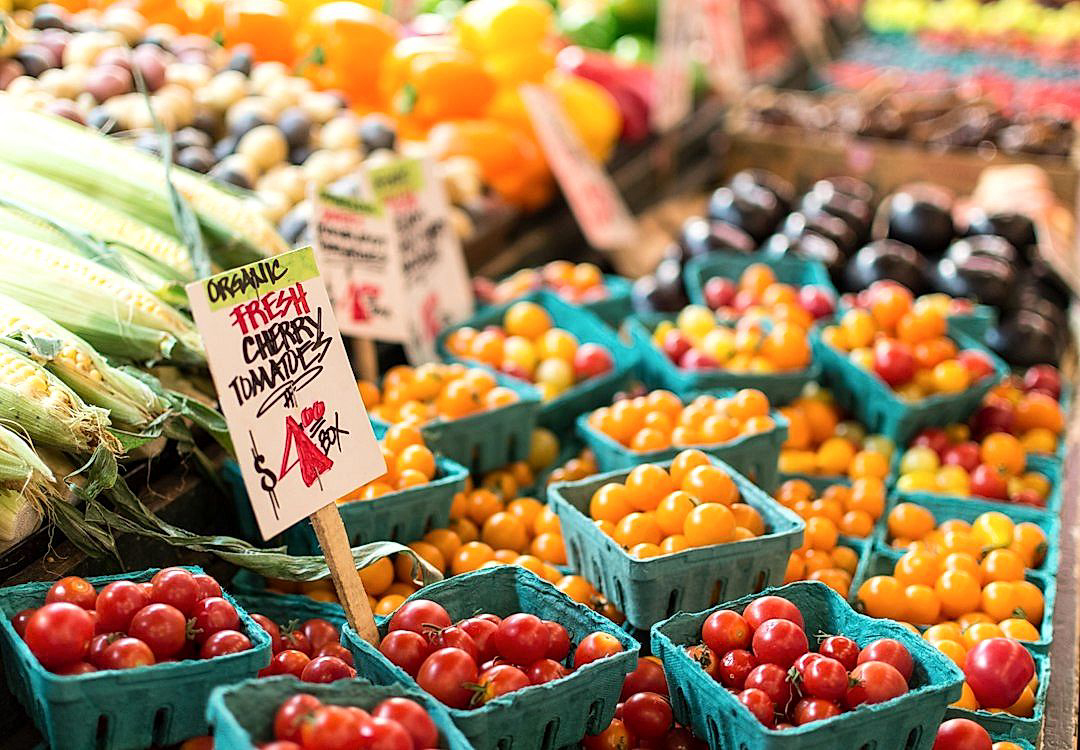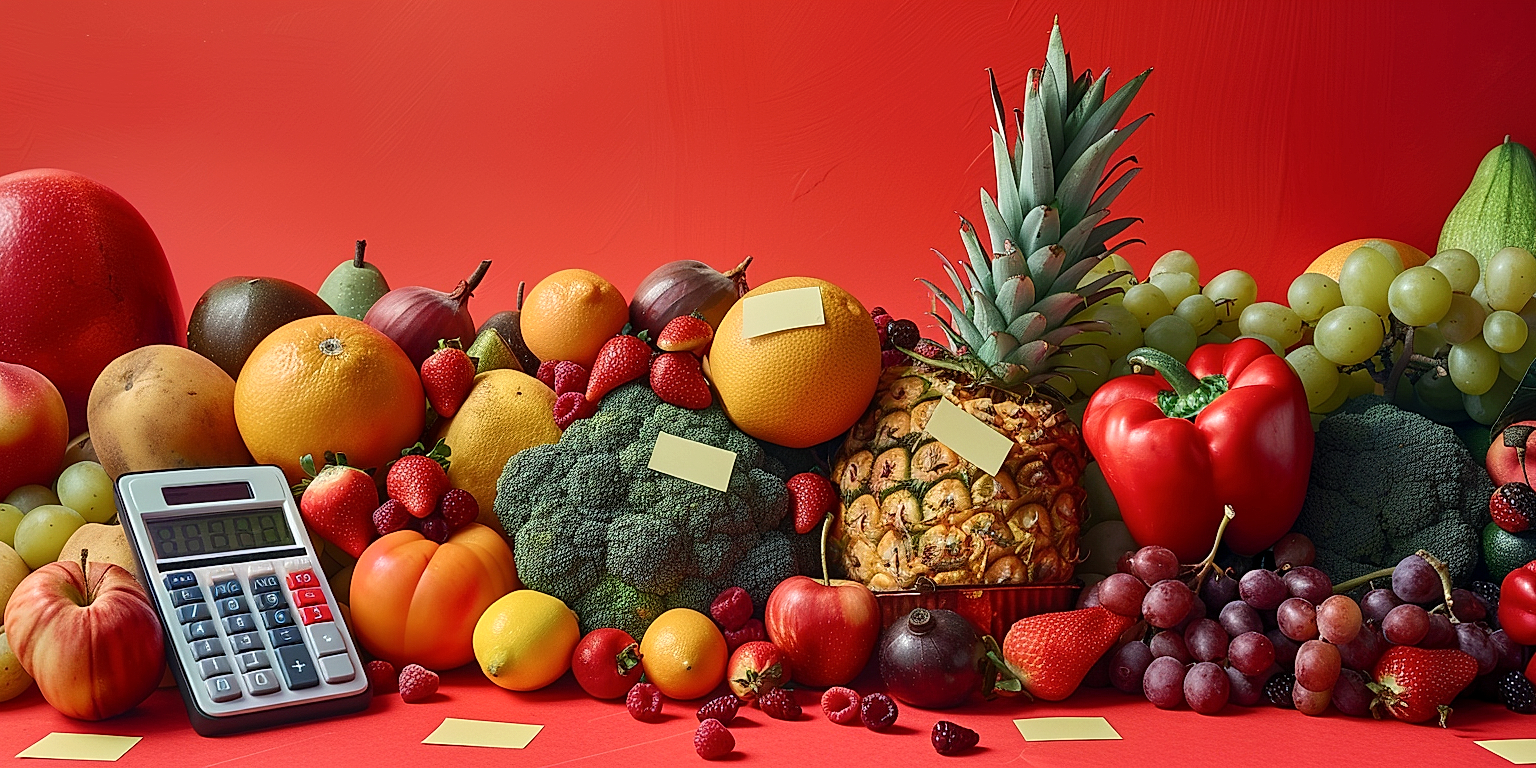The global marketplace for organic food is growing each year as an increasing number of consumers recognize the value of consuming products that were cultivated without the aid of chemical pesticides or genetically modified organisms.
However, despite the mounting demand, many organic farmers struggle with setting the right price for their produce.
The expenses tied to organic farming are not insignificant, and when coupled with the added pressure to offer competitive prices to ensure sales, pricing can be a challenging aspect to manage.
Is there a way to strike a balance between ethical farming practices and financial feasibility?
This blog will explore methods organic farmers can employ to determine fair, competitive pricing without undermining their valuable contributions to healthy eating options and environmental preservation.
Comprehending the foundation of these methods is not only important for the farmers, but also essential for consumers who wish to understand and value the price they pay for organic goods.
Contents
- Techniques For Pricing Organic Produce
- 1. Compare Prices With Similar Organic Producers
- 2. Factor in Costs of Organic Certification
- 3. Consider Demand and Supply of Organic Produce
- 4. Implement a tiered pricing structure.
- 5. Adjust pricing depending on the competition.
- 6. Use Dynamic Pricing During Different Seasons
- 7. Factor in Production and Overhead Costs
- The Bottom Line
Techniques For Pricing Organic Produce
1. Compare Prices With Similar Organic Producers
The process of pricing organic produce begins with an essential and strategic step: comparing prices with similar organic producers. This approach isn’t about just matching the competition—instead, this can provide significant insight into the current market conditions and trends.
It is crucial to understand the pricing approaches used by similar producers, as it can guide you to formulate competitive prices. Comparison of prices gives an understanding of how much consumers are willing to pay for organic products, and can guide you in setting realistic expectations.
Undertaking a thorough market analysis will give you a better understanding of the competitive landscape. The prices set by other organic producers serves as a benchmark and impacts consumer perception of what constitutes fair pricing.
Online platforms, farmers’ markets, and retail chains are good places to start when comparing prices. Observe the pricing range for products that are similar in nature to yours, in terms of quality, size, and production methods.
Different producers might have different pricing strategies, which are influenced by factors like their objectives, cost structures, and market positioning. Some producers might price their products higher due to the premium quality they offer, while others can price theirs lower due to economies of scale.
Remember that comparing prices is not about copying other organic producers’ strategies, but about understanding the market framework in order to formulate a sound pricing strategy.
Don’t just look at the highest and lowest prices—consider the mid-range prices as well. These will serve as a reference point for pricing your organic produce, and allow you to better understand the variability in pricing.
Also, take into account the packaging, labeling, and branding of other organic producers. These factors play a huge role in justifying their pricing and can be a differential element for your products as well.
Beyond the price, look into the value addition offered by the producers. Some organic producers not just sell a product, but a complete experience, which can justify higher pricing. These include factors like customer service, product variety, and quality certification.
Don’t forget to update your comparisons regularly. The organic produce market is not stagnant, but constantly evolving, driven by variables like consumer demand, seasonality, and market saturation.
Lastly, while comparing, remember that every business is unique. Just because a certain pricing strategy or level works for another producer doesn’t mean it would work best for your unique value proposition.
Through consistent analysis and comparison, you become more informed about how to price your organic produce competitively, while embracing your unique offering and factors like cost, demand, and internal goals.
Comparing prices with similar organic producers is an ongoing exercise and an integral part of your pricing strategy. It gives you a realistic idea of the marketplace and equips you with the insights needed to set competitive prices for your produce.
2. Factor in Costs of Organic Certification
When considering the pricing of organic produce, the cost of organic certification is an essential factor to consider.
Acquiring an organic certification is not cheap nor simple. It entails an inspection of the farm, a review of the farming processes, and ongoing fees for maintaining the certification.
These costs form a significant part of the overall overhead that is associated with producing organic food.
Many consumers are willing to pay a premium for organically grown produce due to its perceived health benefits and environmental friendliness.
Thus, it is logical to factor in these costs into the selling price of the produce to ensure that the business remains profitable.
However, it is also vital to strike a balance and pay close attention to not price oneself out of the market. Competitive pricing is key.
Organic producers must ensure they clearly communicate the value to justify the cost to the consumers.
For instance, informing consumers about the rigorous process of gaining certification and the ongoing practices to maintain it can help them understand why organically grown products are often priced higher than conventionally grown products.
Moreover, part of the challenge is to not alienate non-organic buyers, who may see higher prices and assume they are only for the wealthiest shoppers.
To appeal to a wider market, some producers choose to take on the costs of certification themselves, rather than passing it on to the consumers, as a part of their commitment to sustainable farming.
This can be a feasible strategy for companies that have high sales volume or those who are going the extra mile to obtain consumer trust.
Producers can also consider cost-saving strategies, like pooling resources with other organic farmers to share the cost of certification or seeking out governmental grants or subsidies that are available for organic farming.
In the end, each organic producer needs to evaluate their individual circumstances to determine how to best factor in the cost of organic certification into their pricing strategies.
Whatever the decision, it is essential that organic producers make it clear to their customers why their produce is more expensive – engaging and educating the customers about the efforts made towards being certified is a step in the right direction.
Beyond just justifying the cost, it also gets a chance to shed light on the actual value consumers get from these organic products, thereby creating a more informed consumer base.
3. Consider Demand and Supply of Organic Produce
When determining pricing strategies for organic produce, it is essential to consider the market dynamics of supply and demand.
Organic farming is becoming increasingly popular, and thus, the market supply is steadily growing.
At the same time, consumer demand for organic products is on an upward trend due to an increasing awareness of the health and environmental benefits of organic produce.
Price setting techniques should take into account this steady demand, which can influence the price consumers are willing to pay.
As the demand rises, so does the willingness of consumers to pay higher prices for organic produce, providing a reasonable margin for organic farmers.
Pricing strategies should therefore be dynamic to incorporate these market fluctuations.
For instance, during periods of low organic produce supply but high demand, prices can be set higher to reflect the scarcity of the product.
On the contrary, during periods of excess supply, prices might require adjustment downwards to encourage purchases and avoid wastage.
However, careful attention needs to be given to not undercut prices excessively, as this could lead to undervaluing the product and creating a perception of substandard quality.
Anticipation of future supply and demand trends can also influence pricing.
For instance, if a bumper harvest is anticipated, prices may need to be revised downwards in advance to account for the increased market supply.
Conversely, an anticipation of a decreased supply, perhaps due to unfavorable weather conditions, could justify a price increase.
Effective pricing strategies should therefore factor in the vulnerabilities of organic farming, such as susceptibility to climatic conditions, pests, and diseases, which can drastically affect supply.
Understanding the demand and supply dynamics of organic produce can go a long way in setting prices that ensure profitability while still being competitive in the market.
A careful consideration of these market factors, coupled with a deep understanding of the organic produce market trends, can guide a farmer to decide on a pricing strategy that balances profit with sustainable agriculture.
4. Implement a tiered pricing structure.
When pricing organic produce, a tiered pricing structure can help optimize revenue and manage customer perceptions.
This strategy involves setting different price points for the same product based on certain factors.
For example, prices could be layered according to the quantity bought, such as offering discounts on bulk purchases.
Alternatively, it could hinge on the quality of the produce – perhaps higher-priced tiers for premium-quality items and lower price tiers for lesser quality.
Employing a tiered pricing structure could significantly improve sell-through rates and profit margins in the organic produce sector.
This pricing model can also depend on the availability or scarcity of the produce.
For instance, hard-to-find items could be placed in higher price tiers, while more common produce could be priced at lower tiers.
Customers can then make purchasing decisions based on their needs, preferences, and budgets.
By offering more options, customers feel like they have more control over their purchases and are likely to perceive the pricing as fair and reasonable.
This pricing strategy requires a solid understanding of your produce, customer base, and market conditions.
In order to benefit from a tiered pricing structure, it is necessary to closely monitor sales patterns, feedback, and purchasing behavior.
Changes and adjustments can then be made as necessary to optimize the pricing tiers.
Communicating the value associated with each tier effectively to customers is also crucial.
This can be achieved through a variety of marketing and advertising methods.
Importantly, while the bottom tier should cover production costs, the higher tiers should increase profits.
Overall, a tiered pricing structure can provide a flexible and customer-orientated approach to pricing organic produce.
5. Adjust pricing depending on the competition.
Adjusting the pricing of your organic produce in alignment with your competition is an effective strategy to stay competitive in the market.
This doesn’t necessarily mean lowering your prices to match or beat your competitors, rather it involves understanding the pricing strategies they employ and how they are perceived by customers.
The quality of your organic produce vis-à-vis your competition’s also plays a critical role in price adjustment decisions.
If your produce is superior in quality, you have the liberty to command a slightly higher price.
Understanding your competition and their pricing strategies allows you to make informed decisions about your own pricing structure.
However, if there are multiple competitors offering similar quality, then having a competitive price point becomes crucial for survival in the market.
Moreover, competitor’s pricing can offer insight into how much customers are willing to pay for organic produce.
If buyers consistently choose your competition over you due to pricing alone, it might be necessary to revisit your pricing strategy.
On the other hand, if your prices are much lower than your competitors, you might be leaving money on the table.
It’s important to strike a balance where your prices are not too high to deter customers but also not too low that you’re missing out on potential profit.
The concept of ‘value for money’ also becomes essential while adjusting prices based on competition.
Customers are willing to pay a premium for organic produce up to a certain extent, hence it’s essential to focus on providing good value for the price you ask.
Keep in mind that adjusting prices is not a one-time activity, it’s important to regularly track and react to changes in the competitive landscape.
This will help you stay competitive and keep your pricing strategy relevant with the trends in the organic produce market.
Lastly, take into account the fact that pricing is just one aspect of your competitive strategy, the overall customer experience including the product quality, customer service and sustainability efforts also influence their purchase decisions.
6. Use Dynamic Pricing During Different Seasons
The concept of dynamic pricing is essential in the field of organic produce marketing.
This strategy involves varying the price according to seasonal demand, availability, and other factors.
For organic farmers, understanding and implementing dynamic pricing can significantly adjust profitability and revenue throughout the year.
Indeed, it positions the organic products competitively in the market, making them more appealing to consumers during high-demand seasons.
The cost of organic produce tends to be higher because of the stringent and costly methods used in production, and dynamic pricing helps balance out these costs.
During seasons when certain organic produce is abundantly available, pricing can be lowered to encourage sales and reduce wastage.
Conversely, during periods of limited availability, prices can be raised to reflect the scarcity of the produce.
Moreover, employing a dynamic pricing strategy allows for pricing to be adjusted if there’s a sudden surge in demand for certain produce due to external factors.
This flexibility is crucial in ensuring that organic farmers are not left with surplus stock or miss out on potential higher profits due to unexpected consumer behavior.
However, implementing dynamic pricing requires a deep understanding of market trends, consumer behavior, and forecasting techniques.
It’s necessary to conduct regular market research and keep track of fluctuations in demand, supply, and prices throughout each season.
Effective dynamic pricing strategies should also factor in costs associated with the change in seasons, such as additional storage or refrigeration costs for certain products.
This strategy, while potentially more complex, allows organic producers to maximize their profits and stay competitive throughout the year.
In many cases, the use of dynamic pricing during different seasons could, arguably, be the difference between success and failure in the organic produce industry.
7. Factor in Production and Overhead Costs
When pricing organic produce, it is essential to understand the significance of production and overhead costs.
Production costs are typically higher for organic products because they do not employ conventional farming techniques which use synthetic fertilizers and pesticides.
As a result, organic growers need to invest significantly more time, labour, and resources into each unit of produce that they cultivate.
This aspect not only drives up production costs but also represents a critical aspect of organic farming that needs to be carefully calculated and factored into the final price of the product.
The other part of this equation is overhead costs.
These are the ongoing business expenses not directly tied to creating a product or service, but still vital for the operation of the business.
Examples might include lease or mortgage payments, utilities, insurance, equipment maintenance, and salaries of non-production staff.
It is therefore critical for organic producers to accurately track their overhead costs and incorporate these into the price of their products.
While overhead costs might not seem directly related to the produce on sale, they do form an integral part of the total cost of production.
If overlooked, they might impact the overall profitability of the business.
Also, a common error among organic producers is underestimating their total expenses, including both production and overhead costs.
This could lead to an insufficient price point that may not cover the total cost of production and business operation.
Paying careful mind to pricing calculation based on correct estimation of costs is therefore crucial for the financial sustainability of an organic farming enterprise.
It’s critical to have a clear understanding of both costs because they directly impact the profitability of their business.
In developing a pricing strategy, organic producers must therefore ensure they fully account for these costs and adjust their pricing accordingly so that they can maintain a reasonable profit margin.
Minding these factors helps not only in maintaining operational sustainability but also impacts the grower’s ability to continue offering high-quality organic produce to their customers.
In conclusion, while costing and pricing might prove complex, they are essential for organic farming where business operation takes into account multiple variable factors and consistent overheads.
The Bottom Line
Establishing the right pricing strategy for organic produce requires consideration of various factors including competition, demand and supply, certification costs and overhead costs.
Comparison to similar producers offers a starting point, but adjustments may be essential to maintain profitability.
A tiered pricing structure allows flexibility depending on demand, while dynamic pricing comes useful with seasonal shifts.
Not only does this help in sustaining business growth, it also ensures the provision of affordable, high-quality organic produce to consumers.
Remember that the goal is not just to sell, but to create a sustainable, profitable business which supports the organic farming industry, contributing positively to consumers’ health and the environment.




